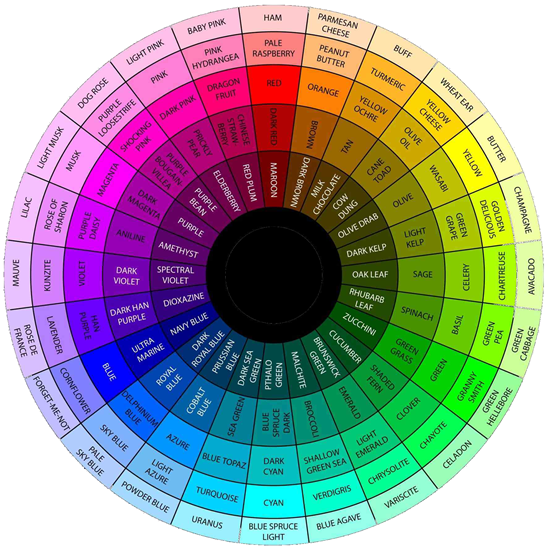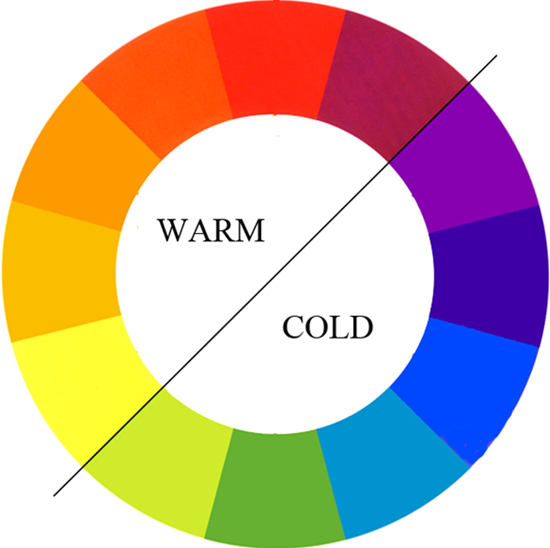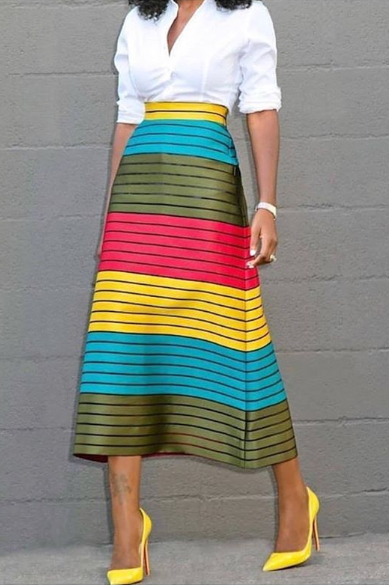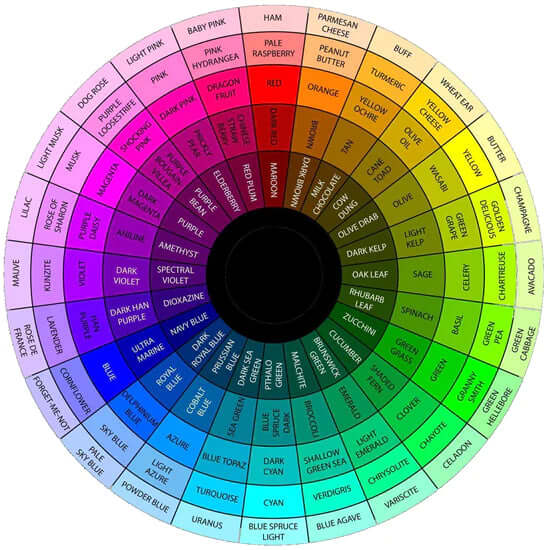You may have ignored it in junior high science class but in the fashion world, the color wheel is a game changer. Our minds see "beauty" as symmetry, balance, and repeated patterns. We naturally respond well to harmonious color combinations in clothing and accessories. If you understand how the fashion color wheel works, it will give you an entirely new perspective on color matching and ensure you have the tools available to create a perfectly balanced and classy-looking ensemble.
The fashion clothing color wheel
The color wheel has three predominant patterns: primary colors, secondary colors, and tertiary colors.
Primary colors
The three primary colors are spaced equally around the color wheel, The primary colors are red, yellow, and blue. They can be mixed together to create any other color. Every color derives from a mixture of the three primary colors - and no colors can be mixed to create them.
Secondary colors
Secondary colors are a combination of the primary colors. You can think of them as children of the primary colors. Orange (red and yellow), purple (red and blue) and green (blue and yellow) are considered the secondary colors and like the primary colors, are spaced equally around the color wheel for clothes but exactly centered between the primary colors on the wheel.
Tertiary (intermediate) colors
When primary colors and secondary colors are combined, they create a third class of colors called tertiary colors. Mixing primary and secondary colors makes other colors such as aqua and coral. The tertiary colors are yellow/orange, red/orange, red/purple, blue/purple, blue/green, and yellow/green.
Color temperatures
Another way to classify colors is by temperature. Warm colors are hues from red through yellow. Cool colors are hues from green through violet. Neutral colors are "colorless" and include black, gray, white, brown, and other colors in between. Warm colors appear more active and tend to arouse or stimulate the viewer while cool colors tend to recede and serve to calm and relax.
- Warm colors – yellowish white through red colors such as red, orange, yellow, and brown.
- Cool colors – bluish-white colors such as blue, purple, and green.
- Neutral colors – such as black, gray, white, off-white, brown, charcoal, and beige.
How to match colors and create the perfect color combination in your outfit

Given the understanding of the color wheel for clothes and color temperatures, we can easily match colors that are pleasing to the eye and create a
beautifully matched outfit.
Complementary colors

Complementary colors on the color wheel
Complementary colors are colors on opposite sides of the clothing color wheel, For instance, red/green, yellow/purple, and blue/orange. Complementary colors always match.
Usually, the colors are the same distance from the center of the color wheel (i.e. shades), but you can play around with complementary colors at various distances from the center to produce a similarly satisfying combination. A trick professional designers use is to pick two complementary colors, then select one that is a slightly darker shade. For instance, instead of red/green, opt for red and olive green for variety while retaining a harmonious color combination.
Analogous colors

Analogous colors (yellows in this example)
Analogous colors (also called dominance harmony) are colors that are continuous shades on the clothing color wheel. Different shades of the same color almost always look great together giving us another way to produce matching (i.e. pleasing) color combinations. Red, reddish-orange, orange, and yellow-orange are examples of a set of analogous colors.
Triadic colors
Triadic colors are colors on the wheel that are equally spaced apart, forming a triangle across the color wheel for clothes. These colors include not just the primary (red, yellow, and blue) and secondary colors but any combination of colors that are equally spaced on the color wheel. Triadic colors look well together and are typically quite vibrant.
Split complement colors
Split complement colors are also pleasing to the eye. To find the split complement colors on the fashion color wheel, start with a color, then find the two colors next to its complementary color (the color on the opposite side of the wheel). Surprisingly, these colors often provide a pleasing balance of color. For example, using the wheel below we can see that the complementary color for red is green. The two adjacent colors, yellow/green and blue/green, also work well in an outfit that is predominantly red. As you can see in the dress below, the colors indeed work well together.

Split complementary color schemes
Tetradic colors
Tetradic colors, also called
double complementary, are the richest of all color schemes but the most difficult to harmonize properly. A tetradic color scheme requires one color to dominate over the others. Tetradic colors can be uncovered by looking for a rectangle of colors on the clothing color wheel. Similarly, a square color scheme uses four colors spaced evenly around the color circle. Again, pleasant tetradic color schemes are difficult to form but are sometimes found in professionally designed patterns.
Other considerations

There are a few other considerations to keep in mind when matching colors in an outfit.
Match colors to your skin tone
Try to match your color choices with your skin tone. Cooler colors such as navy, blue, and shades of green pair well with pale or yellow-toned skin while warmer colors such as gold and amber look good with deeper skin tones.
Keep color families together
Try to keep color families together. For instance, match pastel colors with other pastels, jewel tones with jewel tones, etc.
Match colors of the same material type
Naturally occurring colors in certain materials should be matched. For instance, if you wear dark leather
shoes, choose a dark leather belt.





 Given the understanding of the color wheel for clothes and color temperatures, we can easily match colors that are pleasing to the eye and create a beautifully matched outfit.
Given the understanding of the color wheel for clothes and color temperatures, we can easily match colors that are pleasing to the eye and create a beautifully matched outfit. Complementary colors on the color wheel
Complementary colors on the color wheel Analogous colors (yellows in this example)
Analogous colors (yellows in this example)
 Split complementary color schemes
Split complementary color schemes
 There are a few other considerations to keep in mind when matching colors in an outfit.
There are a few other considerations to keep in mind when matching colors in an outfit.

2 comments
Outstanding. Very helpful. Thank you
This was amazing and I really love all of the details, thank you so much, it really helped with my school art project. Thank you again and again and again and a million more again’s.